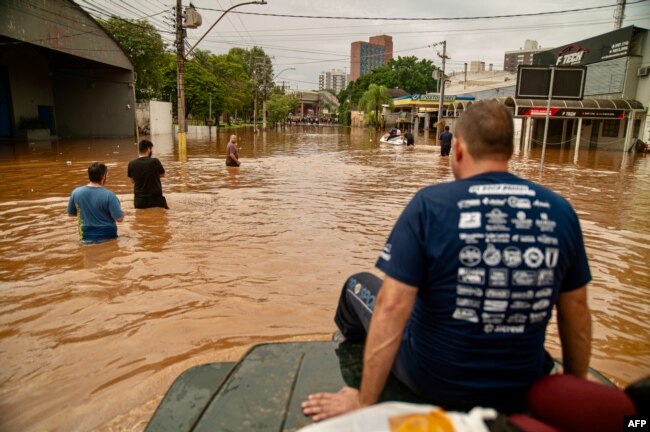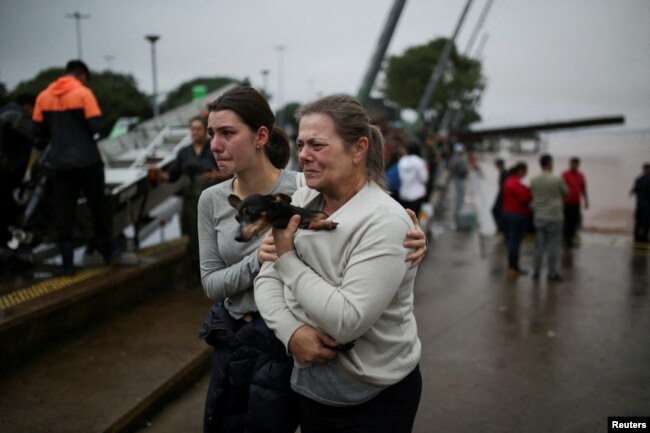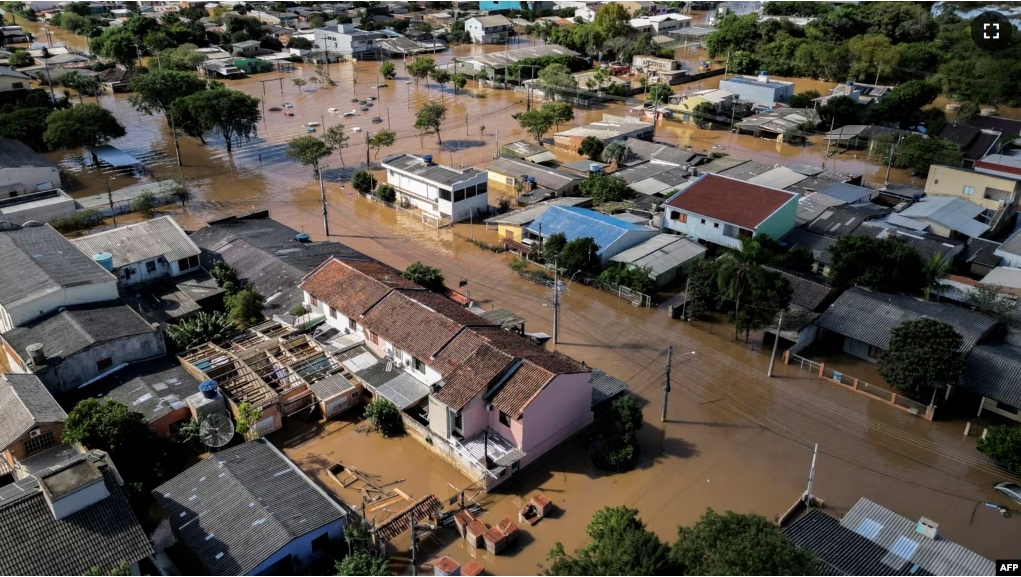A team of international researchers says that climate change made recent flooding in southern Brazil twice as likely to happen.
It also said that the El Niño Pacific Ocean current made the rains in Brazil more severe.
Last month, flooding killed more than 170 people and displaced nearly 580,000 in Brazil’s southern state of Rio Grande do Sul. Local officials said it was the worst disaster in the area’s history.
A network of experts called World Weather Attribution said that the heavy rainfall in Rio Grande do Sul was an “extremely rare” event. The group said it expects such an event to happen only once every 100 to 250 years. However, the group added, it would have been even rarer without the effects of burning fossil fuel.

The experts at World Weather Attribution also said the flooding was six to nine percent more severe than it would have been without climate change. The experts combined weather observations with results from climate models to make their estimates.
Lincoln Alves is with Brazil’s space research center INPE. Alves said, “The climate in Brazil has already changed.” He said that the study “confirms that human activities have contributed to more intense and frequent extreme events…” He added that the flooding showed Brazil’s vulnerability to climate change.
The researchers said that the El Niño Pacific Ocean current also played a part in the flooding in Brazil. Experts say the El Niño phenomenon contributes to higher temperatures in many parts of the world. It also brings increased rainfall and flood risk to parts of the Americas.

The scientists added that failure of important infrastructure, deforestation, and the fast growth of cities helped to increase the effects of the disaster. The flooding affected Porto Alegre, the capital of Rio Grande do Sul. The city is home to 1.3 million people.
Regina Rodrigues is a researcher at the Federal University of Santa Catarina. She said that good flood protection infrastructure and the right urban planning are needed to reduce the effect of “such extreme events.”
I’m Anna Matteo.
Gabriel Araujo reported this story for Reuter from Sao Paolo, Brazil. Anna Matteo adapted it for VOA Learning English.
_____________________________________________
Words in This Story
fossil fuel –n. fuels including oil, coal or natural gas
model –n. a set of information from the past that is used to make predictions about the future
contribute –v. to help something come about
phenomenon –n. something that happens in nature that can be observed and studied
vulnerability –n. a weakness; a condition of being easily damaged or harmed
infrastructure –n. structures like dams, bridges, and drainage that are deeded to have modern civilization
deforestation –n. the process of cutting down trees in large numbers without replacing them
